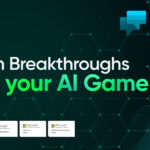With businesses turning to digital solutions for each of their processes, there has been a significant increase in data generation. Data is generated with employees’ every click and it becomes a part of the organizational data. If enterprises want to excel in today’s versatile market, they need to make data-driven decisions. The significance of processing big data is monumental and yet, according to Forrester, around 73% of organizational data remains unutilized for analytical purposes.
Importance of Processing Organizational Data
It is paramount for enterprises to effectively use their data to drive analytics and strategies and prevent it from lying idle. To cater to the data being generated in all formats and schemas, large organizations usually require various tools and teams to mature it through processing. Data maturation usually takes place in the form of storing, transforming, ingesting, analyzing, or engineering the organizational data.
Data, whether structured or unstructured, holds a sea of possibilities to boost business growth and drive infallible business strategies. However, the true data potential can only be unlocked by top-tier data processing that can mature raw data into meaningful insights.
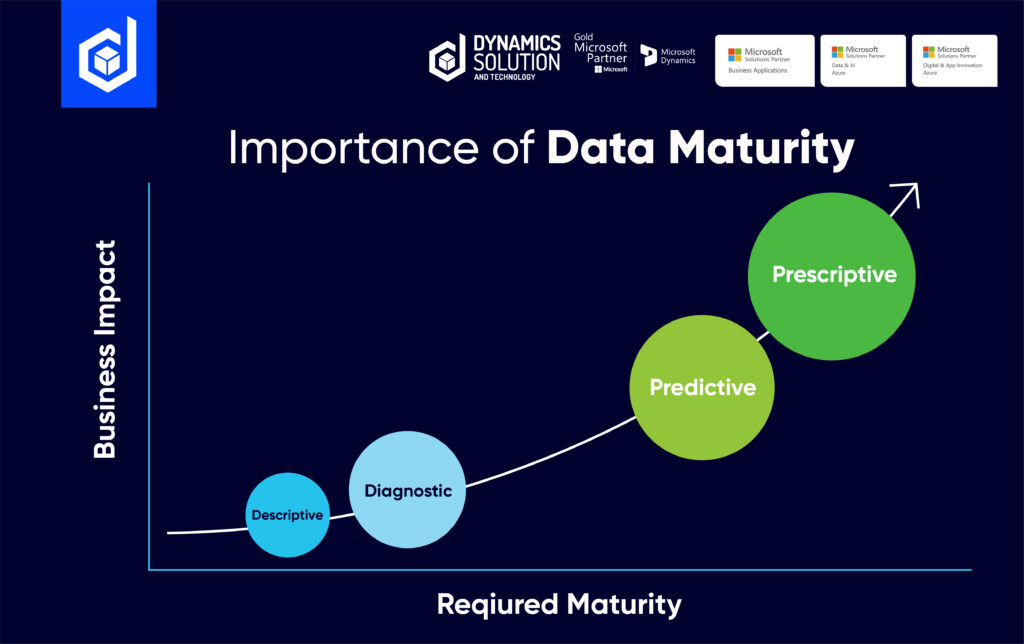
Data processing drives data maturity. There are four stages of data maturity, each with its own level of impact on the business profitability.
- Descriptive Analytics: Highlights organizational occurrences like low sales or high customer retention.
- Diagnostic Analytics: Highlights the reasons behind the organizational occurrences by exploring past data like subpar lead follow up caused low sales.
- Predictive Analytics: Highlights the future predictions regarding organizational performance by exploring past data and incorporating AI predictive models and forecasting tools.
- Prescriptive Analytics: Optimizes decision-making by driving strategies regarding data predictions.
Business data processing consists of three major categories. Each category has its own dedicated teams, tools, SOPs, and functionality platforms. The categories are:
- Data Engineering
- Data Storage
- Data Analytics
Unfortunately, data being processed through these categories and their respective tools results in it being spread over an extended network of departments, software, and functionalities. A complex network of intra-organization data handling has the following downsides:
- The combined cost becomes extremely high.
- It becomes difficult for teams to collaborate due to different platforms.
- The risk of security loopholes and consequent malware attacks arises.
- Lack of visibility into data assets
- Poor data governance policies
Microsoft Fabric: Unifying and Processing Data in One Place
Considering the influx of data-related problems, an effective AI-powered solution, which enhances the cross-functional collaboration for data demands, is the need of the hour. Microsoft’s forever evolving data solutions which were initially offered under the SQL Server umbrella, have been unified under the AI-powered Microsoft Fabric.
Microsoft’s newly released Fabric is an end-to-end solution for all kinds of data needs. Fabric has efficiently combined all data handling functionalities like data engineering, data storage, data science, data governance, and data analytics into a unified solution.
Microsoft Fabric provides role-specific experiences and hosts processes like Data Engineering, Data Factory, Data Science, Data Warehouse, Real-Time Analytics, and Power BI in a single SaaS platform. It employs previous features like Synapse Data Warehousing, Synapse Data Engineering, Data Factory and Power BI in a powerful confluence with new features like Microsoft OneLake.
Microsoft Fabric is built on a vision of unifying entire data infrastructure of an organization to:
- Provide deeply integrated analytics
- Enhance shared data experiences
- Enable developers to access all datasets
- Combine all data in a unified data lake which can be easily integrated with all data tools
- Centralize all data governance and administration processes.
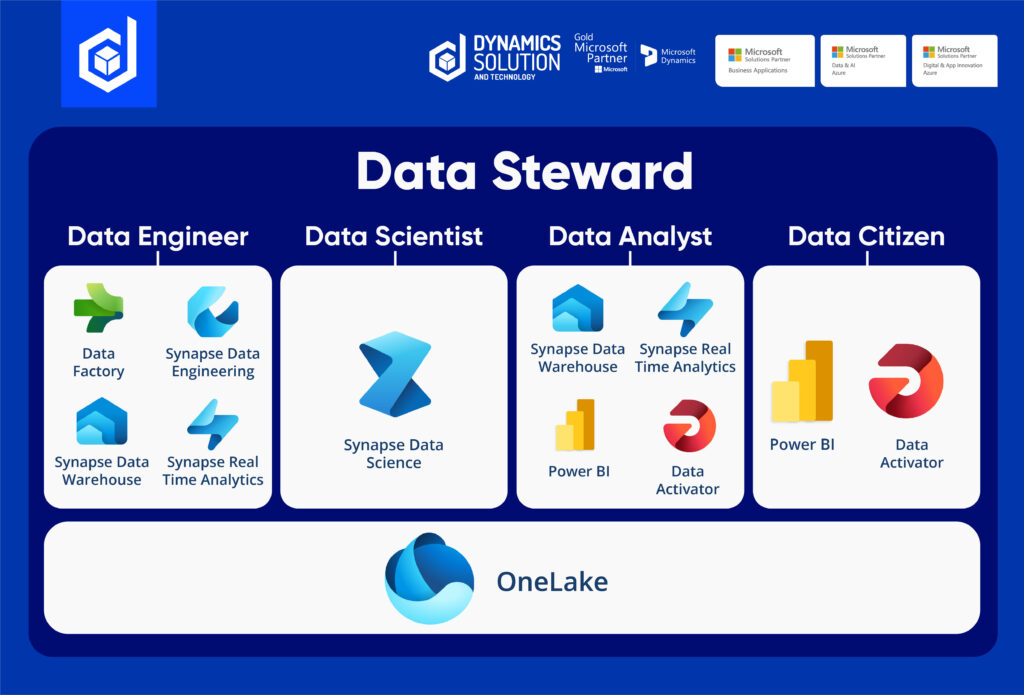
Key Features of Microsoft Fabric
Fabric combines all data processing experiences and caters to various personas that work to address data needs from data engineering to data governance. It seamlessly breaks down departmental barriers to allow a unified experience where teams can benefit from each other’s data processes and pipelines.
Each data professional will be equipped with every data tool, which ensures top-notch data integrity. Microsoft Fabric provides the following functionalities, which previously had to be employed separately:
- Data Engineering: Fabric provides the functionalities of Synapse Data Engineering to enable data engineers to transform and store all the organizational data in a dedicated data lakehouse. It enables engineers to collaborate with other departments like data warehousing or analytics, through the lakehouse architecture. Data Engineering provides engineers to achieve data efficiency through tools like Lakehouse, Apache Spark job definition, Notebook and Data Pipeline.
- Data Factory: Fabric combines the powerful functionalities of Power Query and Azure Data Factory, to integrate data with the help of more than 200 connectors. The connectors assist in connecting data from various sources. Data Factory enables the ingestion, transformation, and preparation of data through efficient workflows. It comes with built-in AI which allows the automation of common integration tasks. Data Factory has two key features, Dataflows and Pipelines.
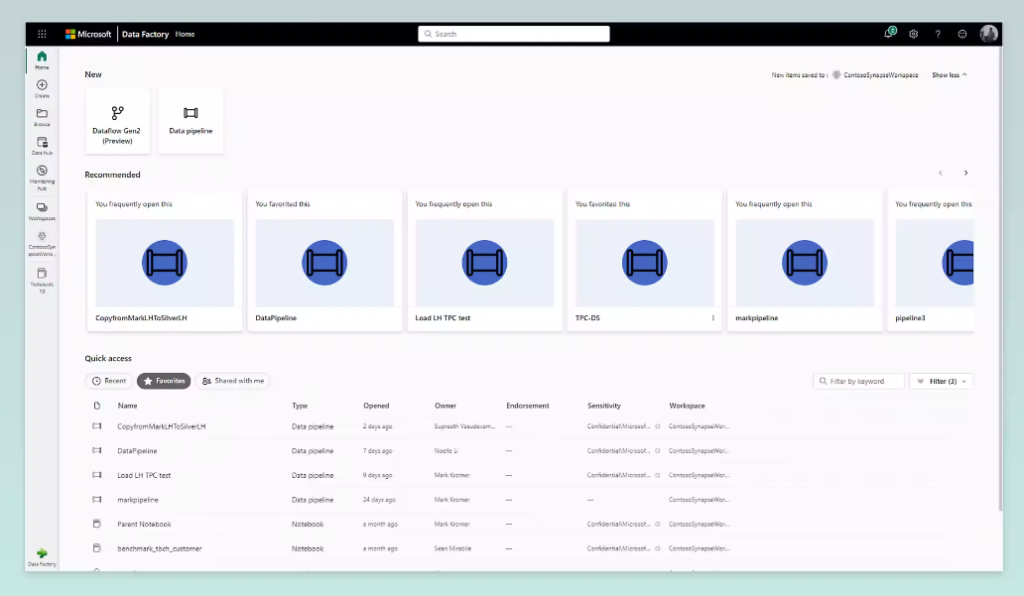
- Data Science: The integration with Azure Machine Learning in Fabric enables data scientists to create and deploy machine learning models to operationalize their processes. Data science enables users to work towards the goal of enriching data and driving business insights. Data scientists can enhance the organizational data by integrating it with prediction models as well. It supports activities like data preparation, exploration, modelling, model scoring and integrating its predictive insights not Power BI. Lastly, Fabric allows them to work on the same data prepared by Data Engineers, stored in OneLake, without having to duplicate it.
- Data Warehouse: By supporting open delta lake formatting, Fabric enables cross-collaboration between teams (with all skill-levels) and democratizes data. Data, instead of being stored in multiple lakes and warehouses, is stored in Microsoft’s OneLake, which eliminates data duplication and enables cross-database querying. It also provides the benefits of SQL engine which aids in cross-database querying and updates the metadata seamlessly. Users can efficiently employ Visual Query Editor, for no-code access to multiple tables to gain quick insights.
- Real-time Analytics: Enterprises must deal observational data coming in, in high volumes, having various schemas and being semi structured in JSON or text formats. Hence, it gets hard for traditional warehouses to process such data. Real-time Analytics, in Fabric, automatically ingests, streams, partitions and indexes data sans any complexities. It seamlessly connects with tools like Power BI and Data Warehouses to aid enterprises in asset tracking, supply chain and inventory optimization and other business management related feats. Real-time Analytics in Microsoft Fabric offers unlimited scalability as per the need. These benefits are aided by tools like Eventstream, KQL database, and KQL queryset.

- Power BI: By enabling business owners to quickly access all organizational data through OneLake, it streamlines the business intelligence aspect. Power BI, in Fabric, drives quick data visualizations and drives intelligent insights for quality decision making from the data models, pipelines and lakehouses.
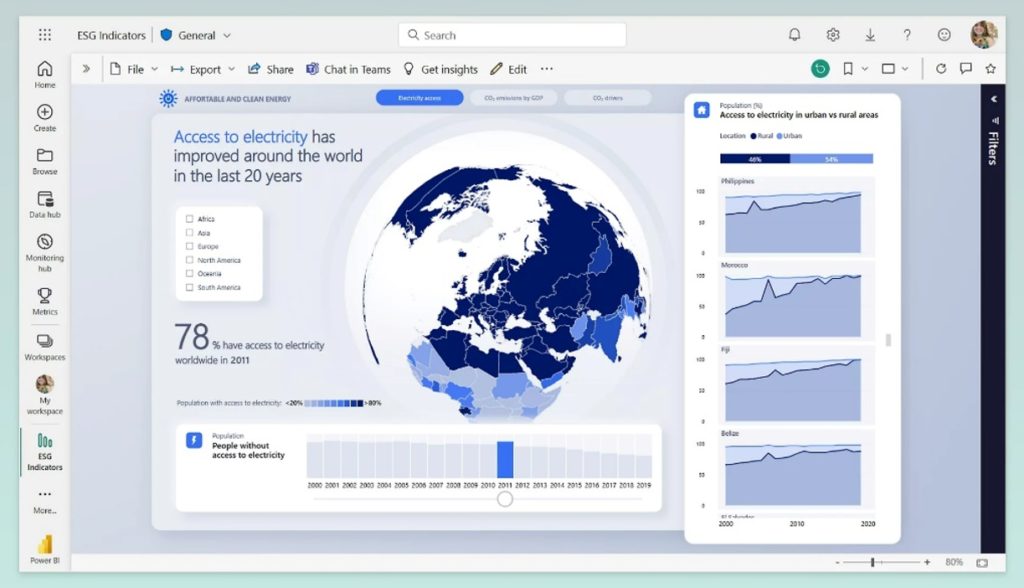
Added Features to Amplify Data Transformation
Apart from its key features, Microsoft Fabric offers additional functionalities as well that enhance the overall data unification experience.
- OneLake: Providing a combined data storage capacity, that is accessible by every functionality in Fabric, OneLake is wittily referred to as ‘OneDrive for data’ by Microsoft.
It encapsulates the entire organization’s data in one place. OneLake diminishes data duplicity, is highly scalable and supports a universal security model that diminishes security loopholes. Built on Azure Data Lake Storage Gen2, it supports all formats and lets users of any technical level access organizational data with ease. It comes with default governance capabilities and provides a layered security functionality in collaboration with Azure Active Directory authentications. - Microsoft Purview: Fabric holds the ability to seamlessly integrate with Microsoft Purview to provide governance capabilities for the entire data estate. It works to provide security and compliance when users are accessing and working on data.
- Data Activator: Providing data citizens with the ability to instantly act on the predictions and forecasting through ML models, Data Activator is a no-code tool which leverages the power of data processing and empowers users to act when required like turning off automated workflows to work out a discrepancy in data.
Microsoft’s mission to stay committed to its ever-evolving excellence results in constant reiterations and upgrades of its products. Since Fabric was recently announced, the product team at Microsoft will keep iterating new features and functionalities to enhance user experience. To get an understanding of the updates made in August, you can watch this video.
Revitalizing Data Unification with Dynamics Solution and Technology
The ability to seamlessly unify their data estates and save time and resources by bringing their various data processing systems under a next-generation platform like Microsoft Fabric, is what bestows businesses with a competitive edge. Unifying data workflows and enabling cross-department collaboration expedites next-generation AI data insights which power business productivities.
Dynamics Solution and Technology, with its team of seasoned professionals, has been transforming businesses by powering their data processes with AI. Our status as Microsoft Solutions Partner is a testament to our commitment to excellence. By integrating Microsoft Fabric in your business, we can power your data handling with AI and unify your organizational data with OneLake.
Let Dynamics Solution and Technology help you unlock the true potential of your organizational data through the AI-powered Microsoft Fabric, and experience endless possibilities of business intelligence, in one place. Schedule a demo now to expedite your organization’s data-driven decision-making capabilities.







